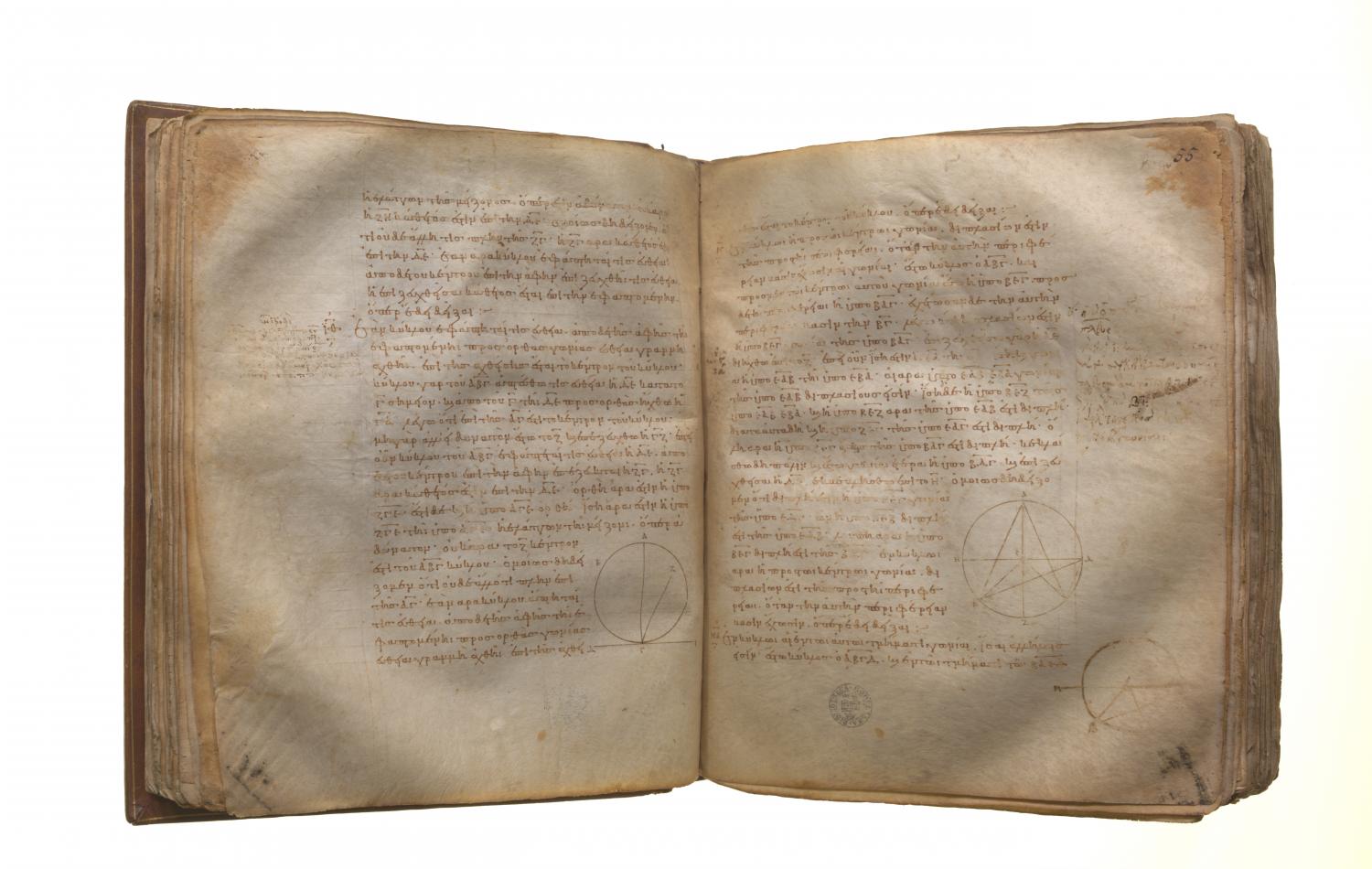Translations
In a circle the angle at the centre is double of the angle at the circumference, when the angles have the same circumference as base. Let ABC be a circle, let the angle BEC be an angle at its centre, and the angle BAC an angle at the circumference, and let them have the same circumference BC as base; I say that the angle BEC is double of the angle BAC. For let AE be joined and drawn through to F. Then, since EA is equal to EB, the angle EAB is also equal to the angle EBA; [I. 5] therefore the angles EAB, EBA are double of the angle EAB. But the angle BEF is equal to the angles EAB, EBA; [I. 32] therefore the angle BEF is also double of the angle EAB. For the same reason the angle FEC is also double of the angle EAC. Therefore the whole angle BEC is double of the whole angle BAC. Again let another straight line be inflected, and let there be another angle BDC; let DE be joined and produced to G. Similarly then we can prove that the angle GEC is double of the angle EDC, of which the angle GEB is double of the angle EDB; therefore the angle BEC which remains is double of the angle BDC.
